18 Birds That Eat Mealworms: An Overview
Last Updated on
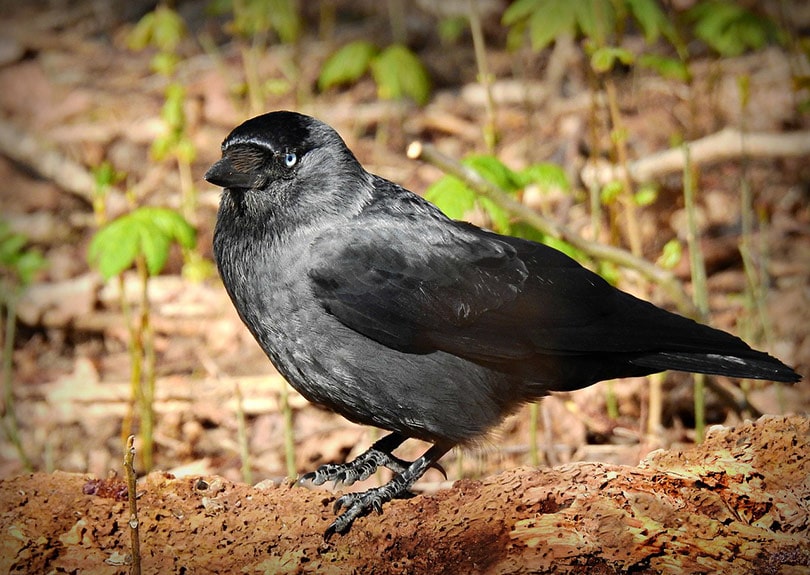
A mealworm bird feeder is a great way to attract insect-eating birds to your yard. Mealworms are an excellent source of protein, and they’re packed with vitamins and high-grade oils.
It’s up to you whether you put live mealworms in your feeder or dried mealworms. It is easier and cheaper to feed wild birds dried mealworms because live mealworms are harder to maintain and more costly to buy.
You should know that birds prefer live mealworms over the dried variety. If you don’t want to deal with live mealworms, you could buy dried mealworms and soak them in lukewarm water before putting them in your feeder to attract more birds.

What Is a Mealworm?
A mealworm1 is the larva of a mealworm beetle. It’s common for mealworms to have elongated, worm-like bodies that are golden brown in color. Mealworm beetles and larvae are typically found in dark, moist, undisturbed places like grain silos or barns.
The 18 Birds That Enjoy Eating Mealworms
Many wild birds love eating mealworms. If you decide to put out a mealworm feeder, you can expect to see some, or all, of the following birds come and enjoy the offerings:
1. Bluebirds

Of all the wild birds that eat mealworms, bluebirds are probably the biggest fans of these critters. As you probably know, bluebirds can be evasive, but they go nuts for mealworms, so you’ll likely attract a few if you put mealworms in your feeder during the summertime. One thing to know about bluebirds is that they don’t like dried mealworms, so either go with live mealworms or soak the dried ones in water.
2. Cardinals
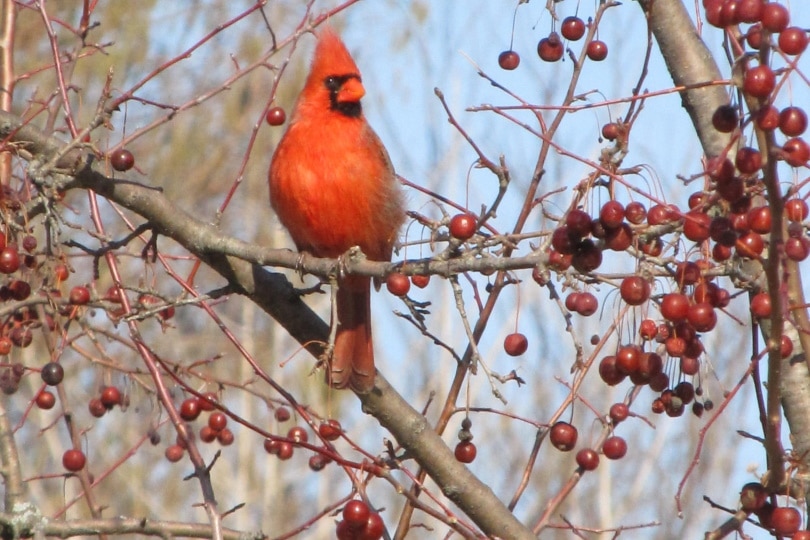
Beautiful, crested cardinals love eating mealworms, especially during the summer months. Summer is when cardinals are breeding, and they primarily eat insects with a few seeds, berries, and fruits. If you mix some seeds and blueberries in with your mealworms, you’ll likely attract cardinals to your feeder.
3. Robins
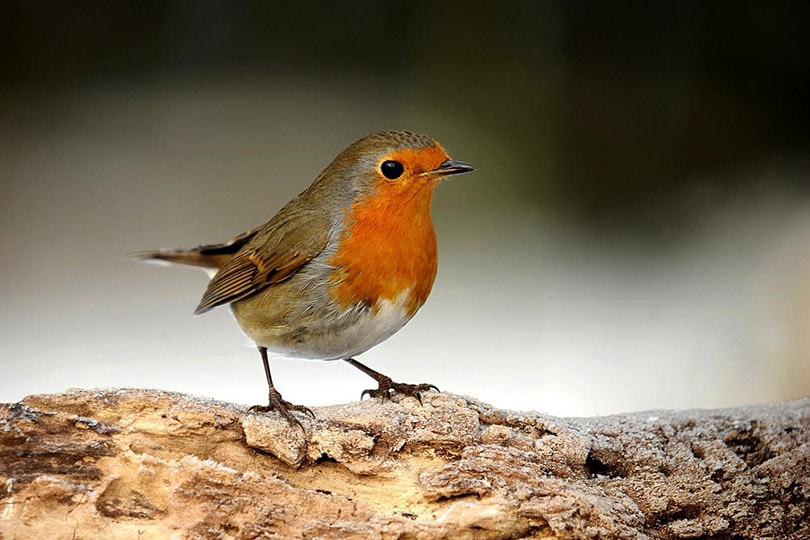
The beloved, red-breasted robin is an insect lover that doesn’t care much for birdseed. If you want to attract robins to your yard with mealworms, you’ll have the best luck if you toss them down on the ground or mix them with suet.
4. Catbirds
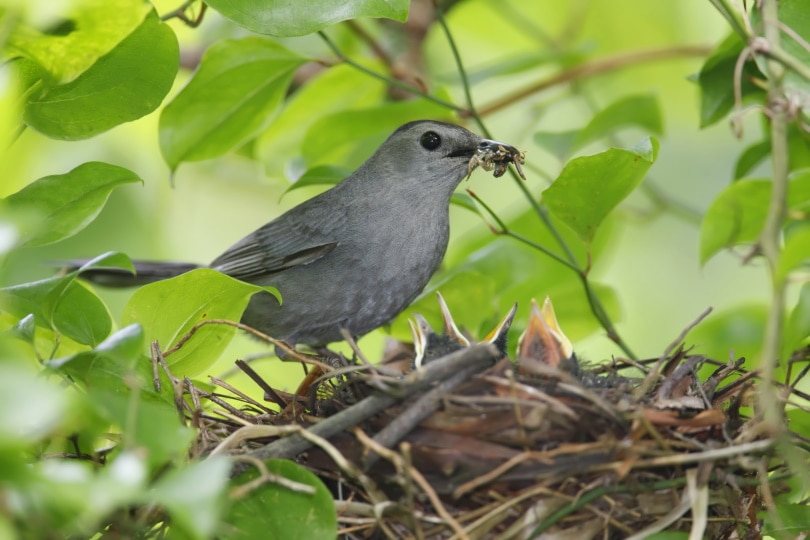
If you put some mealworms in your feeder during the late spring, you may get lucky and spot a few catbirds stopping by to enjoy the treat. Catbirds love insects but also enjoy feasting on berries.
5. Chickadees
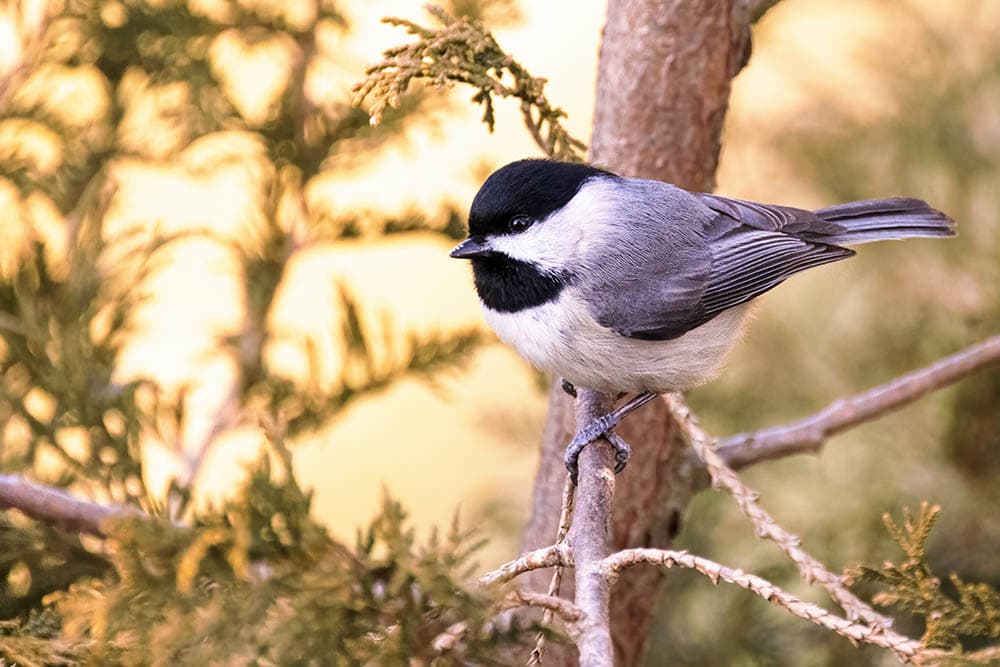
The cute little chickadee is a wild bird that eats a mixed diet of various insects, nuts, seeds, and berries. These nut-loving birds will come to your mealworm feeder if you add a few peanuts to the mix.
6. Nuthatches

Even though their name suggests otherwise, nuthatches eat mostly insects. These small birds spend their waking hours foraging for bugs. They prefer live mealworms over dried ones, so plump them up with water to fool these little birds that are loads of fun to watch.
7. Blue Jays
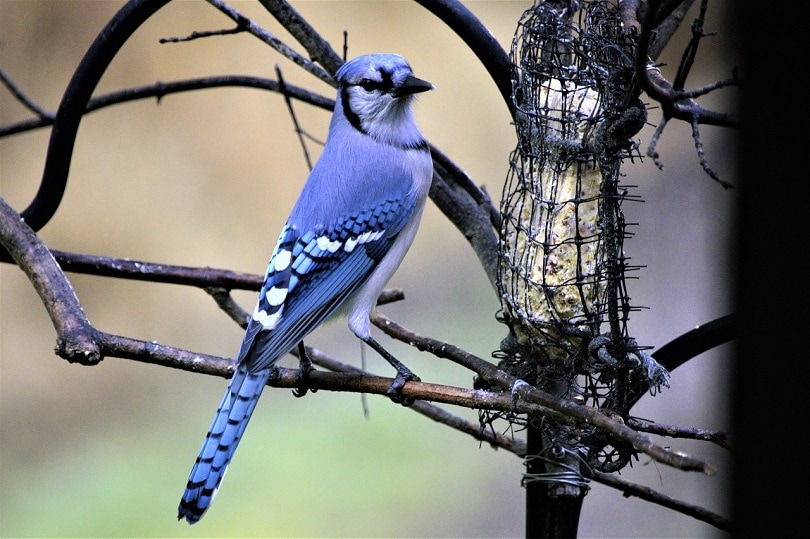
If you don’t mind having bluebirds coming around and bullying the other wild birds in your yard, offer them some dried mealworms. Anyone who is a big fan of Blue Jays and wants to see dozens of these majestic birds in their yards should mix the mealworms with their favorite treats: shelled peanuts.
8. Sparrows

Sparrows will eat dried mealworms you place out during the breeding season from May through September. This is when these small birds are busy feeding their young. Sparrows are somewhat aggressive feeders that will gang up on other birds trying to eat from a feeder, so beware of overfeeding them.
9. Orioles

Mealworms are one of the few things you can put in your backyard bird feeder to attract orioles. Orioles are fussy eaters that will normally only stop by if you have mealworms or something sweet on the menu, like fruit, jelly, or nectar.
10. Mourning Doves
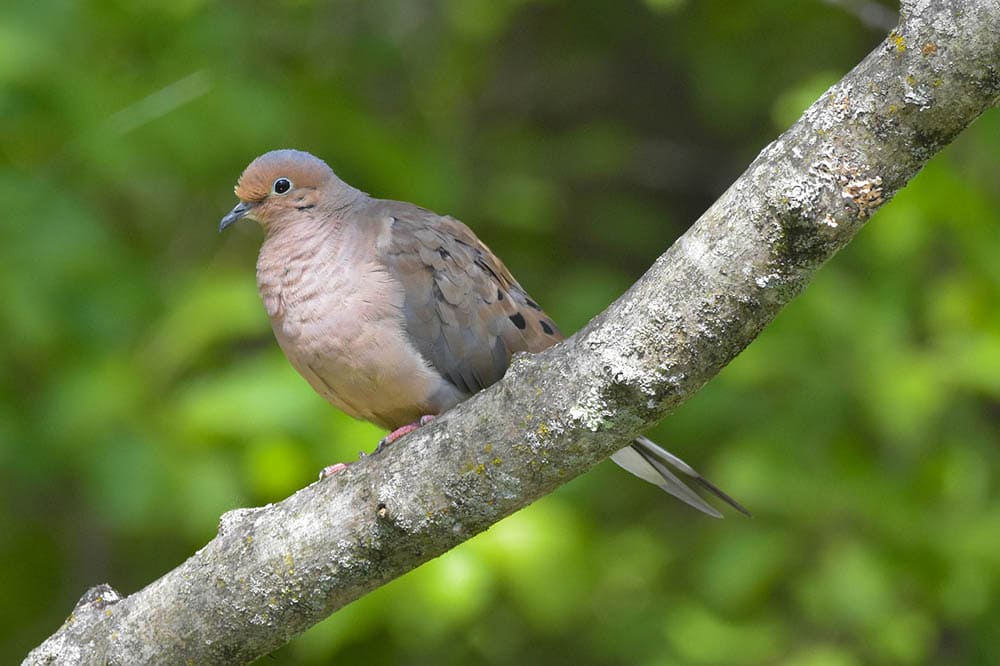
Even though doves eat mainly seeds, they will stop by for a mealworm treat if you spread some on the ground with birdseed.
11. Starlings

Starlings will gladly feast on a few mealworms, but these birds are aggressive if they show up in large groups. If you attract some starlings to your mealworm feeder and they start picking on the other birds, discontinue the mealworm offering until they go away. Otherwise, use a caged bird feeder to keep the larger birds out while allowing the smaller species to enjoy the food you’re offering.
12. Juncos

Summer is the best time of the year to attract juncos to your yard with mealworms since this is when these beautiful songbirds eat insects. If you’re fortunate to attract a few juncos, you’ll surely be serenaded by their beautiful singing, so enjoy every moment.
13. Thrashers

If you place your mealworm feeder near shrubs for cover, you may be able to attract some shy thrashers to your yard. These birds enjoy eating mealworms, mixed berries, and nuts.
14. Towhees

Towhees will gladly eat mealworms you place in your feeder, along with some suet, oats, or fruit. These trusting birds feed mealworms to their young and are known to eat from people’s hands when they are busy collecting food for their babies.
15. Woodpeckers
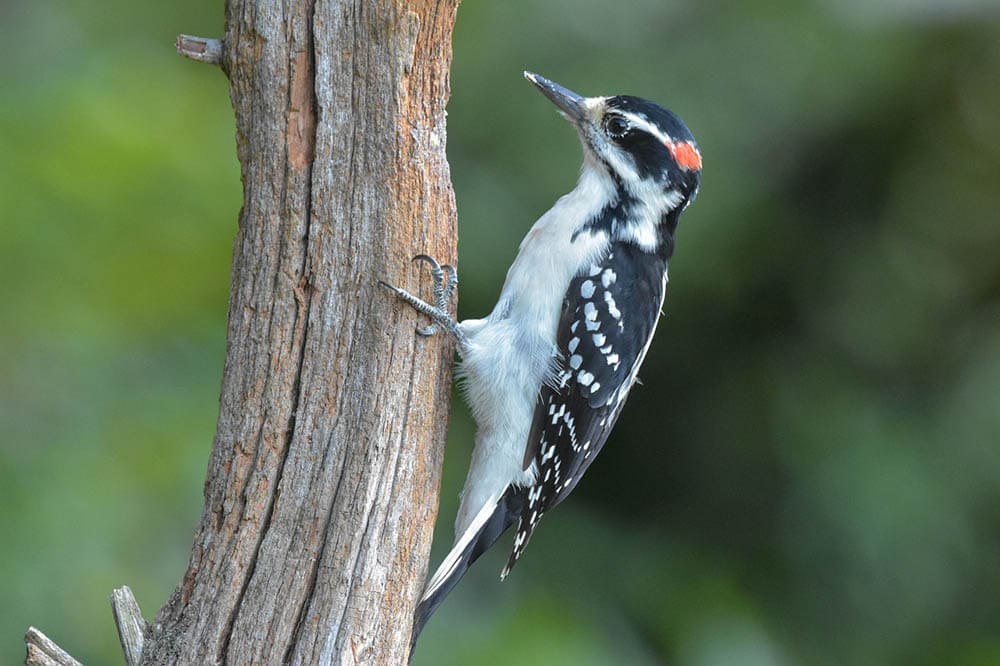
Woodpeckers have big appetites and eat mealworms with their other favorite foods, including sap, nuts, berries, and fruit. Woodpeckers are solo eaters who don’t like sharing, so don’t expect to see them eating your mealworms while other birds are around.
Related Read: 16 Species of Woodpeckers in California (With Pictures)
16. Wrens

Wrens are eager eaters that will gladly dig into some mealworms you scatter on the ground or place in your bird feeder. These birds also enjoy eating tiny pieces of suet, peanut, and sunflower pieces.
17. Tufted Titmice
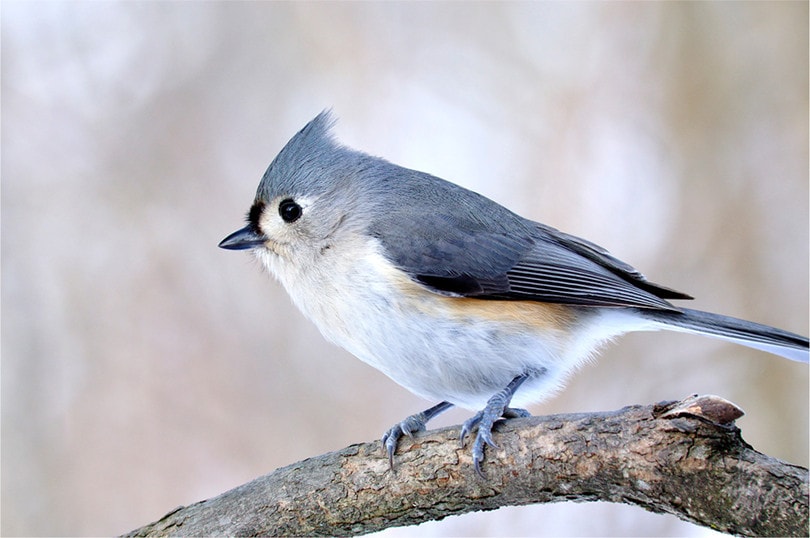
Tufted Titmice are small songbirds that primarily eat insects. These birds aren’t picky about what time of the year they enjoy mealworms. They’ll eat them year-round as long as you place the larvae in your backyard feeder.
18. Kinglets

As small scavenging birds, kinglets eat lots of things like plant matter, insects, worms, and small vertebrates. These birds will likely show up if you place some dried mealworms in suet or mix them with peanut hearts or hulled sunflower seeds.
Serving Size of Mealworms for Wild Birds
You can expect to go through dozens of mealworms each day once the wild birds in your area discover them. Mealworms are often sold in bulk at pet supply stores and in large packages containing several pounds of larvae. Do your homework to find the best deal that allows you to stretch your dollars.
Don’t overdo it when feeding mealworms to your wild birds. These little larvae should only be used as a treat and offered on a limited basis. Just have fun feeding mealworms to your birds and know that you’re giving them something they consider a special treat.
In Conclusion
As you can see, there are lots of insect-eating birds that love eating mealworms. If you want to attract some new species to your backyard feeder, you can’t go wrong by filling the feeder with mealworms.
Just remember that these larvae should never replace any bird’s regular diet. Instead, mealworms should be offered as a supplemental treat for your feathered friends to enjoy occasionally.
Featured Image Credit: MabelAmber, Pixabay
About the Author Robert Sparks
Robert’s obsession with all things optical started early in life, when his optician father would bring home prototypes for Robert to play with. Nowadays, Robert is dedicated to helping others find the right optics for their needs. His hobbies include astronomy, astrophysics, and model building. Originally from Newark, NJ, he resides in Santa Fe, New Mexico, where the nighttime skies are filled with glittering stars.
Related Articles:
10 Types of Hummingbirds in Arkansas (With Pictures)
8 Types of Hummingbirds in Nebraska (With Pictures)
5 Types of Hummingbirds in Idaho (With Pictures)
3 Types of Hummingbirds in Mississippi (With Pictures)
8 Types of Hummingbirds in Kansas (With Pictures)
5 Types of Hummingbirds in West Virginia (With Pictures)
5 Types of Hummingbirds in Ohio (With Pictures)
Where Do Nuthatches Nest? Nuthatch Nesting Habits Explained
